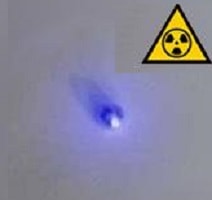We elaborate the uses of Argon and atomic properties with characteristics. Argon is a colorless looking chemical element with atomic number 18. Its symbol is Ar and it belongs to the group of noble gases and its usual state in nature is gaseous. Argon is located at position 18 on the periodic table.
You Can Visit Our Managed: Periodic Table Main Page
On this page you can discover the chemical properties of argon and information about argon and other elements on the periodic table such as neon, krypton, chlorine or helium. You will also learn what argon is for and you will learn what its uses are through its properties associated with argon, such as its atomic number or the usual state in which argon can be found.
You will be able to see qualities of argon such as its melting and boiling point, its magnetic properties or what its chemical symbol is. In addition, here you will find information about its atomic properties such as the distribution of electrons in argon atoms and other properties.
For some elements, some of this information is unknown. In these cases we show the properties attributed to them.
Argon properties
Noble gases like argon have little tendency to participate in chemical reactions. Argon, like other noble gases, has the following properties: It is colourless, odourless and shows very low chemical reactivity under normal conditions.
The state of argon in its natural form is gaseous. Argon is a colourless chemical element and belongs to the group of noble gases. The atomic number of argon is 18. The chemical symbol for argon is Ar. The melting point of argon is 83.8 degrees Kelvin or -188.35 degrees Celsius or degrees Celsius. The boiling point of argon is 87.3 degrees Kelvin or -184.85 degrees Celsius or degrees Celsius.
Uses of argon
Argon, which has the chemical symbol Ar, is the third most common gas in Earth’s atmosphere after nitrogen and oxygen . If you’ve ever wondered what chlorine is for , here is a list of its possible uses:
- Argon gas is used in graphite electric burners to prevent graphite combustion. The graphite burns if heated with normal air due to the presence of oxygen.
- The silicon and germanium crystals are obtained using argon.
- Argon is used to kill pigs (avoiding their suffering) if there is an outbreak of any disease on a farm.
- Occasionally, argon is used to put out fires where it is vital that the equipment is not damaged.
- Argon, in liquid form, is used by scientists to search for dark matter.
- Argon can be used to preserve paint, varnish, and the like when you want to store them once averted.
- The American National Archive uses argon to store important national documents (such as the Declaration of Independence). This prevents documents from being destroyed by air.
- In science laboratories, argon is often used as a carrier gas in gas chromatography.
- While there are some risks, liquefied argon can be used to destroy cancer cells in a procedure called argon coagulation.
- Blue argon lasers are used in surgery to weld arteries and correct eye problems.
- Blue laser lights are made with argon.
- The bulbs are filled with argon to prevent the filament from reacting with air and burning out.
- Divers use argon to inflate a drysuit.
Atomic properties of argon
The atomic mass of an element is determined by the total mass of neutrons and protons that can be found in a single atom belonging to this element. As for the position where to find argon within the periodic table of the elements, argon is in group 18 and period 3. Argon has an atomic mass of 39,948 u.
The electronic configuration of argon is [Ne] 3s23p6. The electronic configuration of the elements, determines the form in which the electrons are structured in the atoms of an element. The atomic radius or Bohr radius of argon is 71 pm, its covalent radius is 97 pm, and its Van der Waals radius is 188 pm. Argon has a total of 18 electrons whose distribution is as follows: In the first layer it has 2 electrons, in the second it has 8 electrons and in its third layer it has 8 electrons.
You Can Visit Our Managed: Periodic Table Main Page
Argon characteristics
Below you can see a table showing the main characteristics of argon.
| Argon | ||
|---|---|---|
| Chemical symbol | Ar | |
| Atomic number | 18 | |
| Group | 18 | |
| Period | 3 | |
| Appearance | colorless | |
| Block | p | |
| Density | 1,784 kg / m3 | |
| Atomic mass | 39,948 u | |
| Atomic radio | 71 | |
| Covalent radius | 97 pm | |
| Van der Waals radio | 188 pm | |
| Electronic configuration | [Ne] 3s23p6 | |
| Electrons per layer | 2, 8, 8 | |
| Crystal structure | face centered cubic | |
| State | gaseous | |
| Melting point | 83.8 K | |
| Boiling point | 87.3 K | |
| Heat of fusion | 1,188 kJ / mol | |
| Vapor pressure | not applicable | |
| Critical temperature | 150.87 K | |
| Critical pressure | 4,898106 Pa | |
| Specific heat | 520 J / (K · kg) | |
| Thermal conductivity | (300 K) 0.01772 W / (Km) | |
You Can Visit Our Managed: Periodic Table Main Page




